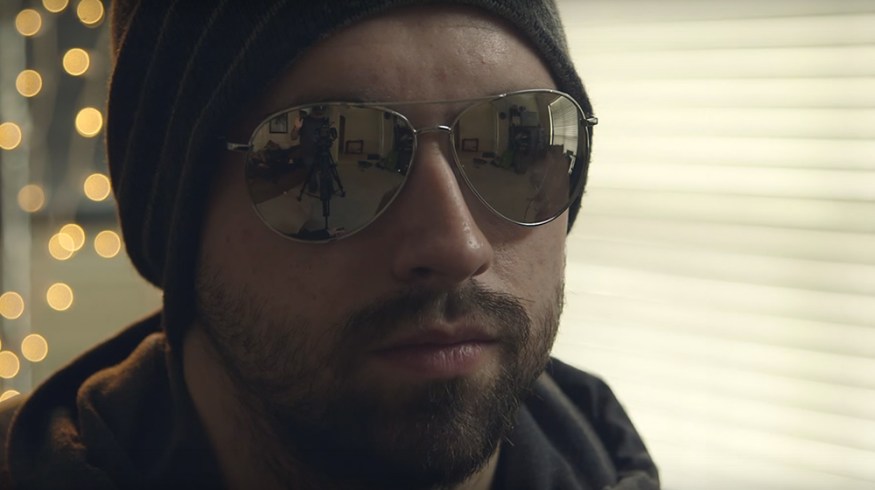
Shooting Tips: How to Remove Glare From Reflective Objects
Hot spots. Accidental cameraman cameos. These are just a couple of the problems caused by shiny objects on set. Here are a few ways to remove the glare from reflective surfaces.
Top image via Film Riot
Reflective surfaces can be one of the biggest burdens to a DP, not only because of the possibility of reflections from the crew, but because a highly reflective surface or object can cause hot spots. A hot spot is a region of clipped whites which cannot, by most means, be recovered.
If a surface or object is spherical or curved, you have a higher chance of clipping the highlights within this object when it has been lit. Usually, objects with a chrome finish are the biggest offenders: Door handles, drawer knobs, chair/stool legs, metallic light switches, glasses, and so forth. I’m sure I don’t need to list every metallic object you’ll likely find within a scene.
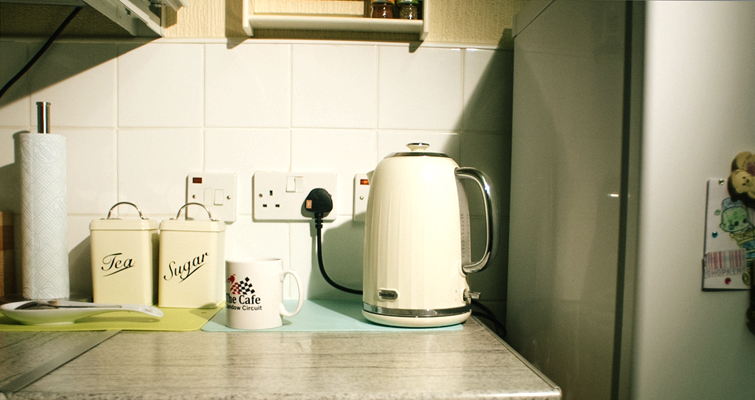
In the still above, there’s a clipped hotspot on the chrome handle of the kettle. In this particular instance, it’s not all that detrimental to the shot, although it would be better without it. Yet, if this shot had an actor in the foreground talking to someone, and the hot spot was glimmering in the background, it would become an eyesore and distraction to the viewer.
Before we start spraying objects or coating them with something to kill the glare, let’s have a look at a few methods for stopping that reflective surface from bouncing so much light in the first place.
1. Cut the Light
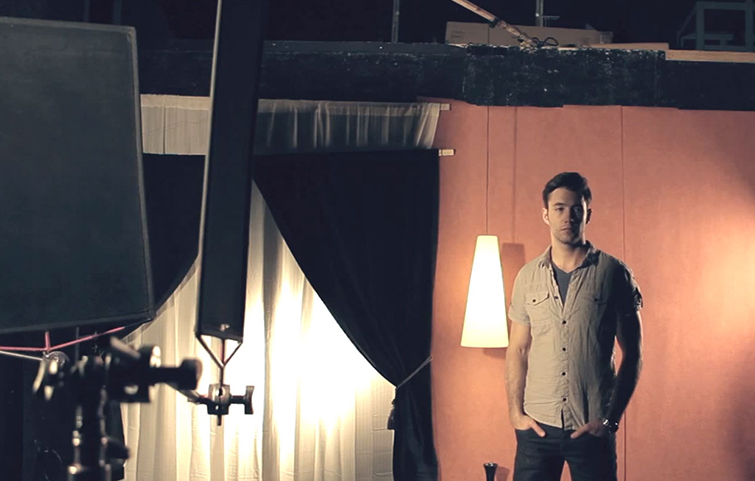 Image via Lights Film School
Image via Lights Film School
In a recent post, I discussed how you could stop light hitting parts of the set using a variety of different flags. If your composition has one particular hot spot which cannot be removed — perhaps a vertical stack of drawers has chrome knobs, and the 2k you have outside is kicking the highlights into overdrive — set up a small vertical finger flag between the light and the chrome object to kill that reflective light.
If established properly, the flag might just look like a window fixture. However, this isn’t going to help when you have several reflective surfaces such as stools or chairs.
2. Soften the Light
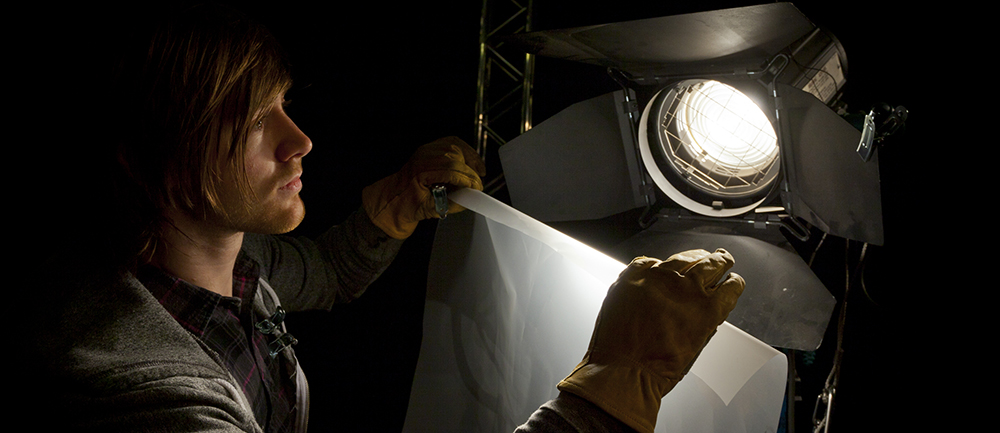 Image via Shutterstock
Image via Shutterstock
In the circumstance of having several reflective non-removable objects, it is appropriate to look at possibly changing your lighting source. If you’re lighting your scene with a set of hard fresnels that aren’t being diffused or bounced, then your reflective surfaces will all have a glaring hotspot.
However, if you switch your lights to a soft source — or at least diffuse the hard light — the light reflected will be a shapeless highlight, which is a lot less intrusive than a glaring hotspot.
There is, however, creative leeway for chrome objects. Alexis Van Hurkman, the author of the Color Correcting Handbook, says:
A sun glint shining off a vintage car’s chrome bumper is going to be off the charts by any scale of measurement. That’s not a highlight worth preserving because chances are the camera that shot the scene recorded next to no discernible image data within that highlight. This is a highlight that you should have no problem sacrificing to the broadcast-safe clipper of your color correction application to lighten more important parts of the image.
But what about when (along with distinct reflective highlights) the crew and camera also appear within the reflections of shiny objects? This is where dulling spray will come into play, as you’ll see in the following clip from Ryan Connolly and the Film Riot team.
3. Use Dulling Spray
A dulling spray is a spray that applies a matte layer to a reflective surface to stop the incident light hitting the reflective surface or element. You can purchase dulling spray in a variety of different colors and matte strengths. For example, you can acquire a semi-matte, which is perfect for applying to wine glasses, as it doesn’t entirely remove the transparency, but it does stop the glare it would have if directly being lit by a light.
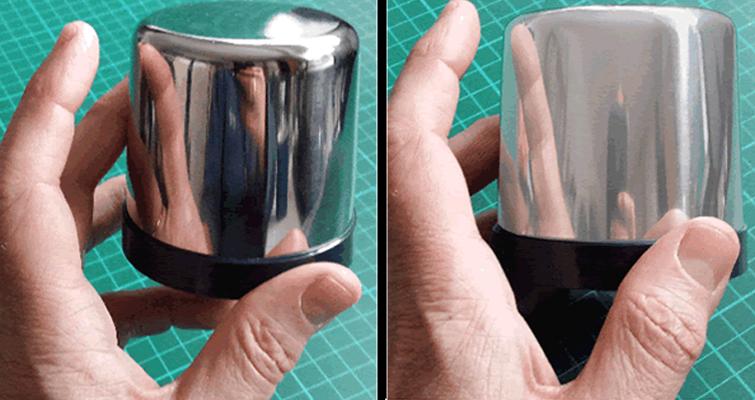
Image via Dirty Down
Two important notes for dulling spray. As with almost anything, there’s always an option to buy a cheaper alternative, or perhaps purchase a spray which isn’t dulling spray but may do the same job. Be wary — it’s important to make sure the spray is free of chlorofluorocarbons, and that the spray is easily removable when dampened and wiped.
Dulling sprays are also ideal for hiding the reflection of crew members, especially if you’re tracking toward an actor where there is a curved metallic object, such as a lamp — the closer you move in, the more exaggerated and apparent the reflection will be.
There’s one manufacturer of dulling sprays called Dirty Down, who also produce spray used by costume and art departments to dirty and age materials. They say that, “Dulling spray can also be used to make a natural grime or dirt look and can be smudged with a damp sponge.”
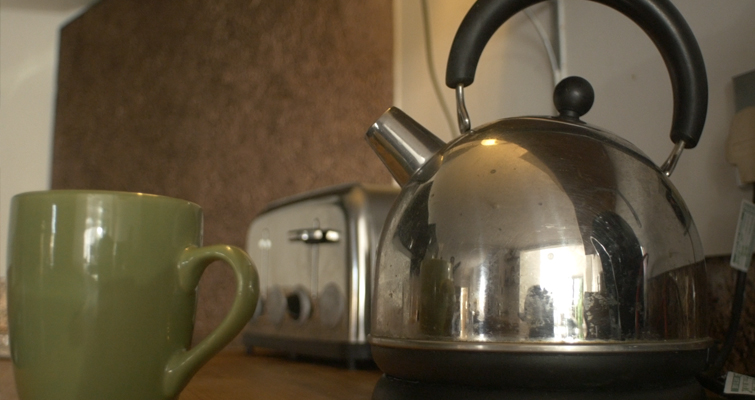
This leads me to this point. Sometimes it may be more suitable to dirty an item rather than just to remove its reflective glare. In the scene above, we required a close-up of an old kettle reaching boiling point and needed to capture the steam coming through the nozzle.
Unfortunately, the camera was obviously visible within the reflection. Using dulling spray so close to the kettle didn’t work. It looked incredibly artificial. Nonetheless, we still had the problem of the camera in the reflection.
To get rid of this, we simply used the end of a candle to slightly smudge the kettle, which added to the grime which had already built up. In the final result, the camera is not visible.
There are countless options available for applying dulling spray and having more control over your image. In the video below from Grip Tips, Dave Donaldson runs through a variety of different sprays that can be used to diffuse light bulbs and remove lens flares.
Got any additional tips for removing glare from reflective surfaces? Share your knowledge in the comments below!





